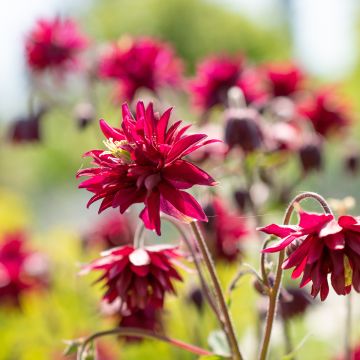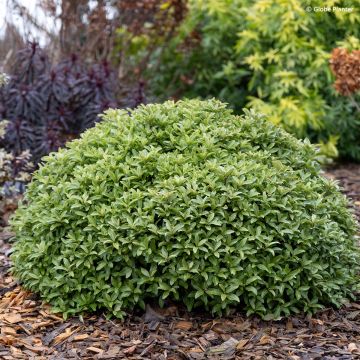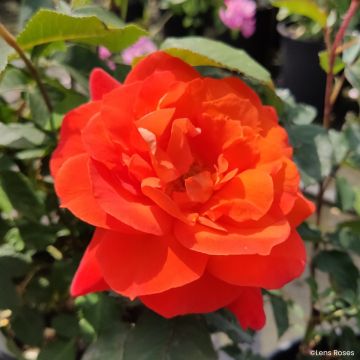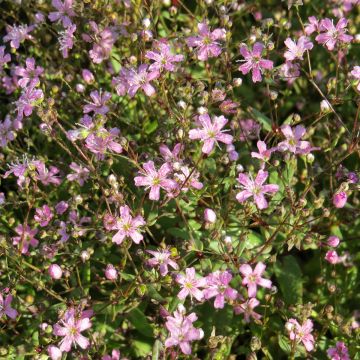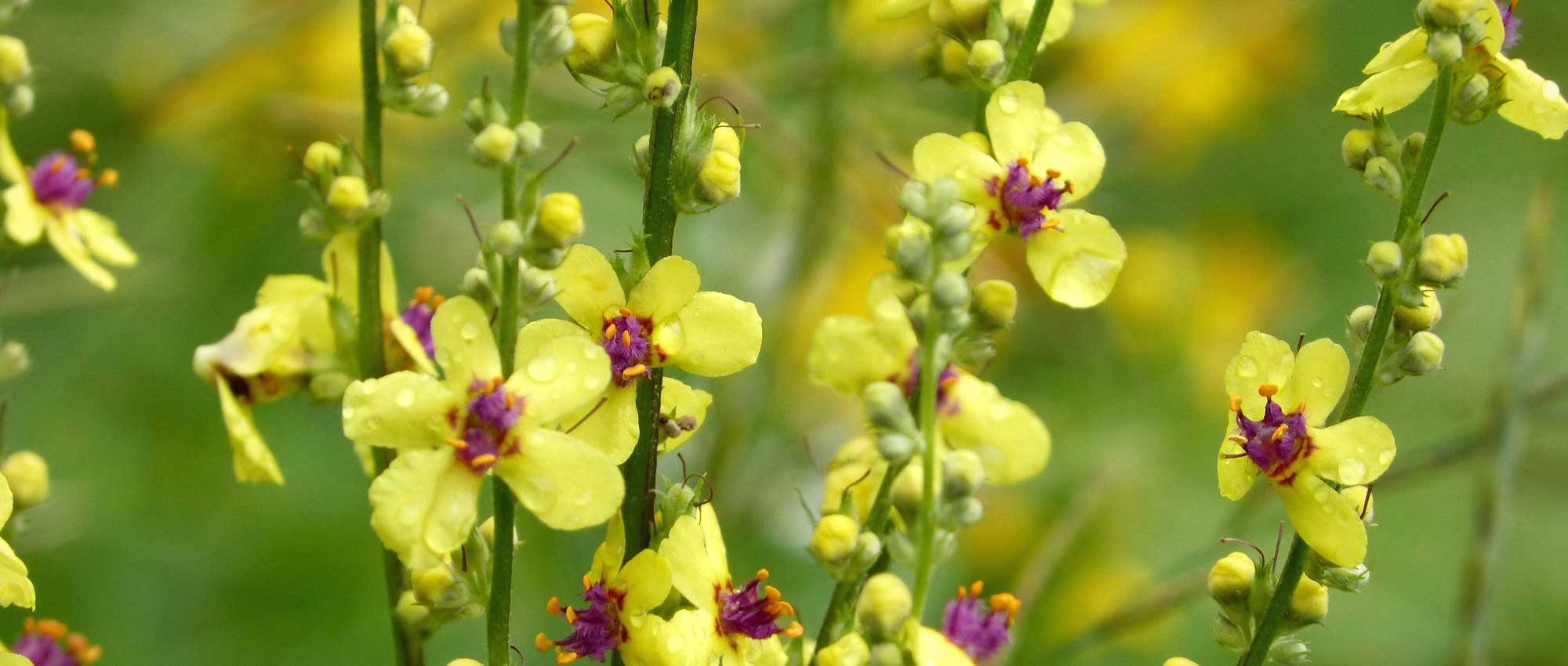

Verbascum x Hybrida Banana Custard
Verbascum 'Banana Custard'
Verbascum x hybrida Banana Custard
Hybrid Mullein
Special offer!
Receive a €20 voucher for any order over €90 (excluding delivery costs, credit notes, and plastic-free options)!
1- Add your favorite plants to your cart.
2- Once you have reached €90, confirm your order (you can even choose the delivery date!).
3- As soon as your order is shipped, you will receive an email containing your voucher code, valid for 3 months (90 days).
Your voucher is unique and can only be used once, for any order with a minimum value of €20, excluding delivery costs.
Can be combined with other current offers, non-divisible and non-refundable.
Why not try an alternative variety in stock?
View all →This plant carries a 6 months recovery warranty
More information
We guarantee the quality of our plants for a full growing cycle, and will replace at our expense any plant that fails to recover under normal climatic and planting conditions.
Would this plant suit my garden?
Set up your Plantfit profile →
Description
Verbascum x hybrida 'Banana Custard', also known as Mullein, is a biennial flowering plant. Its tall spikes composed of numerous small yellow flowers ranging from cream to banana, bloom from June to August attracting butterflies and other pollinators. Its silvery and velvety foliage perfectly complements the hues of its flowers, illuminating dark spaces. Essential in herbaceous borders, it allows you to create rather spectacular bouquets.
Most Verbascums share this tall and graceful appearance. Some are even nicknamed "Our Lady's Candle" in honor of the Virgin Mary. They have a base composed of a rosette of large elliptical leaves, about 30cm (12in) long, grey-green in colour, and velvety for the 'Banana Custard' variety. From this base emerge stems that can reach up to 180cm (71in) in height. They end in a long spike, covered in small 4cm (2in) flowers with a five-petalled corolla and five yellow stamens in the centre, which do not all bloom at the same time, creating layers. This height sometimes requires staking if the mulleins are exposed to wind. It is a summer plant that appreciates well-drained soil and does not tolerate excess moisture in winter. On the other hand, it withstands drought well and therefore prefers sunny locations, accepts rocky and poor soils, while tolerating partial shade. For a possible flowering in early autumn, you can cut back the stems with faded spikes. Like biennials, let it self-seed in late summer, you may find it again the following year.
The 'Banana Custard' Mullein naturally blends in with other summer plants with silvery foliage: Eryngium, shrubby Euphorbia, and Statice. You can also let it brighten up a slope or a rather dry fallow land that you have abandoned. It will bring all its light to it.
Flowering
Foliage
Plant habit
Botanical data
Verbascum
x hybrida
Banana Custard
Schrophulariaceae
Hybrid Mullein
Cultivar or hybrid
Other Thompson and Morgan seeds
View all →Planting and care
Verbascum 'Banana Custard' can be sown in summer, like biennials. The seeds will prefer temperatures between 15 and 18 °C, so you can sow them outdoors or under a properly ventilated shelter. They will germinate between 14 and 30 days, depending on the conditions.
Sow in a tray or pots filled with potting soil mixed with a little sand or vermiculite, cover with a light layer of substrate (1 to 2mm) and keep it moist without soaking it. When the plants are large enough to be moved, you can either place them in larger buckets and keep them under shelter for the winter. You can then plant them in the ground in spring (February-March).
Alternatively, if your region does not experience intense frosts, you can plant them directly in the ground (in October) as soon as they reach about ten centimetres.
Always make sure to place them in well-drained soil, even dry soil, and preferably in full sun. If you want to let them self-seed, do not cut the faded stems at the end of summer.
Sowing period
Intended location
Planting & care advice
This item has not been reviewed yet - be the first to leave a review about it.
Haven't found what you were looking for?
Hardiness is the lowest winter temperature a plant can endure without suffering serious damage or even dying. However, hardiness is affected by location (a sheltered area, such as a patio), protection (winter cover) and soil type (hardiness is improved by well-drained soil).

Photo Sharing Terms & Conditions
In order to encourage gardeners to interact and share their experiences, Promesse de fleurs offers various media enabling content to be uploaded onto its Site - in particular via the ‘Photo sharing’ module.
The User agrees to refrain from:
- Posting any content that is illegal, prejudicial, insulting, racist, inciteful to hatred, revisionist, contrary to public decency, that infringes on privacy or on the privacy rights of third parties, in particular the publicity rights of persons and goods, intellectual property rights, or the right to privacy.
- Submitting content on behalf of a third party;
- Impersonate the identity of a third party and/or publish any personal information about a third party;
In general, the User undertakes to refrain from any unethical behaviour.
All Content (in particular text, comments, files, images, photos, videos, creative works, etc.), which may be subject to property or intellectual property rights, image or other private rights, shall remain the property of the User, subject to the limited rights granted by the terms of the licence granted by Promesse de fleurs as stated below. Users are at liberty to publish or not to publish such Content on the Site, notably via the ‘Photo Sharing’ facility, and accept that this Content shall be made public and freely accessible, notably on the Internet.
Users further acknowledge, undertake to have ,and guarantee that they hold all necessary rights and permissions to publish such material on the Site, in particular with regard to the legislation in force pertaining to any privacy, property, intellectual property, image, or contractual rights, or rights of any other nature. By publishing such Content on the Site, Users acknowledge accepting full liability as publishers of the Content within the meaning of the law, and grant Promesse de fleurs, free of charge, an inclusive, worldwide licence for the said Content for the entire duration of its publication, including all reproduction, representation, up/downloading, displaying, performing, transmission, and storage rights.
Users also grant permission for their name to be linked to the Content and accept that this link may not always be made available.
By engaging in posting material, Users consent to their Content becoming automatically accessible on the Internet, in particular on other sites and/or blogs and/or web pages of the Promesse de fleurs site, including in particular social pages and the Promesse de fleurs catalogue.
Users may secure the removal of entrusted content free of charge by issuing a simple request via our contact form.
The flowering period indicated on our website applies to countries and regions located in USDA zone 8 (France, the United Kingdom, Ireland, the Netherlands, etc.)
It will vary according to where you live:
- In zones 9 to 10 (Italy, Spain, Greece, etc.), flowering will occur about 2 to 4 weeks earlier.
- In zones 6 to 7 (Germany, Poland, Slovenia, and lower mountainous regions), flowering will be delayed by 2 to 3 weeks.
- In zone 5 (Central Europe, Scandinavia), blooming will be delayed by 3 to 5 weeks.
In temperate climates, pruning of spring-flowering shrubs (forsythia, spireas, etc.) should be done just after flowering.
Pruning of summer-flowering shrubs (Indian Lilac, Perovskia, etc.) can be done in winter or spring.
In cold regions as well as with frost-sensitive plants, avoid pruning too early when severe frosts may still occur.
The planting period indicated on our website applies to countries and regions located in USDA zone 8 (France, United Kingdom, Ireland, Netherlands).
It will vary according to where you live:
- In Mediterranean zones (Marseille, Madrid, Milan, etc.), autumn and winter are the best planting periods.
- In continental zones (Strasbourg, Munich, Vienna, etc.), delay planting by 2 to 3 weeks in spring and bring it forward by 2 to 4 weeks in autumn.
- In mountainous regions (the Alps, Pyrenees, Carpathians, etc.), it is best to plant in late spring (May-June) or late summer (August-September).
The harvesting period indicated on our website applies to countries and regions in USDA zone 8 (France, England, Ireland, the Netherlands).
In colder areas (Scandinavia, Poland, Austria...) fruit and vegetable harvests are likely to be delayed by 3-4 weeks.
In warmer areas (Italy, Spain, Greece, etc.), harvesting will probably take place earlier, depending on weather conditions.
The sowing periods indicated on our website apply to countries and regions within USDA Zone 8 (France, UK, Ireland, Netherlands).
In colder areas (Scandinavia, Poland, Austria...), delay any outdoor sowing by 3-4 weeks, or sow under glass.
In warmer climes (Italy, Spain, Greece, etc.), bring outdoor sowing forward by a few weeks.
































